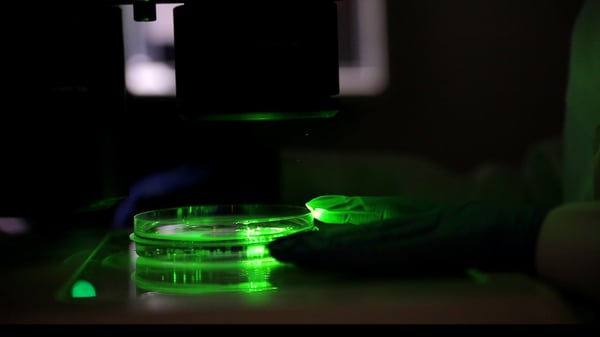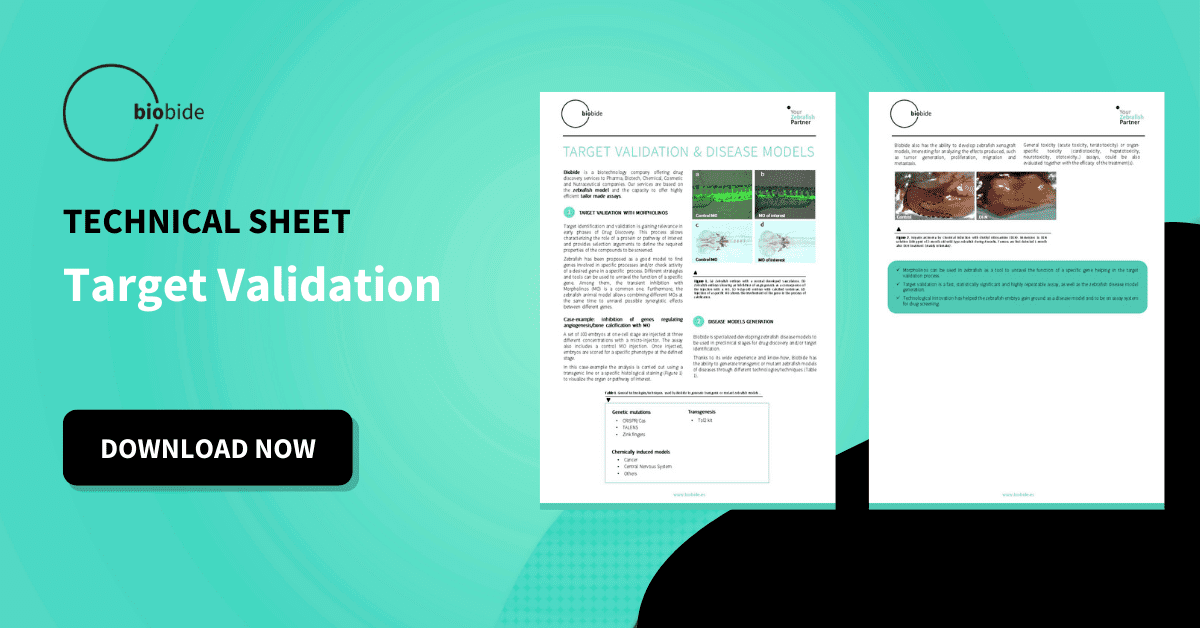The development of new medicines that aim to treat complex diseases is driven by new tools continuously arising in modern science. Both the social pressure as well as the pharmaceutical industry's motivation align to move these new treatments forward and to take them to the market as soon as possible.
Genetic engineering has been positioned as one of the most critical tools within the Drug Discovery industry. In human genetics, a gene can be targeted using different approaches including the use of Morpholinos that silence the gene expression, the use of reverse genetics that induces mutations in a model organism to study their role in disease, the use of Transcription Activator-Like Effector Nuclease (TALENs) or the use of Clustered Regularly Interspaced Short Palindromic Repeats (CRISPR). In this post, we will focus more specifically on the use of CRISPR Cas13.
The origin of CRISPR discovery
Back in 1987, an unusual repetitive DNA sequence was discovered in Escherichia coli while analyzing genes involved in alkaline phosphatase metabolism. Interestingly, this discovery took place independently in three parts of the world at the same time, however, none of the laboratories knew the function of these interrupted clustered repeats. These sequences were derived from DNA fragments of viruses, called bacteriophages, that had previously infected the bacteria. Researchers years later realized that these DNA repeats were able to identify and fight these viruses during subsequent infections.
The value of CRISPR
Before CRISPR discovery, genetic engineering had elevated costs, hindering this fact its use and making it less accessible to the research community.
CRISPR works like a pair of genetic scissors that allow for controlled cuts in strands of DNA, and therefore this technique has simplified the complexity of traditional gene-editing methods. This fact has paved the way for new tools to fight against diseases and has since transformed genetic research.

CRISPR approaches
As we have seen, CRISPR is a tool that allows scientists to easily edit genes and DNA, but different variants can be used depending on the choice of proteins that allow for the precise cuts and edits associated with CRISPR.
Among these variants, the Cas9 variant has become readily and easily available and accounts for a strong background of established cases and well-documented functionality but it is not the most precise of them. CRISPR Cas12 for example also breaks strands of DNA at specific points but it can make multiple precise edits on a single strand of DNA. The advantage of CRISPR Cas13 is explained next.
The CRISPR Cas13 advantage
Cas13 is a nuclease originally characterized in 2016 from the Leptotrichia shahii, a Gram-negative human pathogen that was isolated from human gingivitis. The most notorious characteristic of this variant that makes it stand out from its counterparts is that while Cas9 and Cas12 proteins help the CRISPR system to target DNA editing, Cas13 can cut single-stranded RNA. This single fact confers CRISPR Cas13 a clear advantage since targeting just RNA allows for modifying gene expression without the need to edit any gene or otherwise alter the genome.
CRISPR Cas13 and Zebrafish
Model organisms are necessary to unleash the full potential of genetic engineering tools like CRISPR Cas13. At Biobide we realized that it was crucial to help the pharmaceutical industry to have access to a unique model for testing potential treatments. More than a decade ago we set up our research to establish these state-of-the-art molecular technologies to build a better understanding of how novel molecules may affect gene expression and the biological system as a whole. Our endeavor was focused on a very unique animal model like the zebrafish, which has a proven track record with genome editing (CRISPR and animal models like Zebrafish). This little vertebrate brings together important characteristics including a great homology with humans (84% match for disease gene homologs), its transparency (fluorescence can be observed), its reproducibility of hundreds of eggs allowing for high throughput experiments, or the fact that it is a cost-effective animal model without ethical concerns.
Altogether, at Biobide we are proud of helping pharmaceutical companies move science forward, providing the expertise and speed needed to bring new treatments to market.





